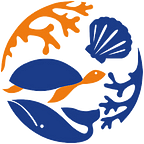This is how SeaLifeBase emerged from an ‘empty’ shell of FishBase
Now, it’s Dr. Nicolas Bailly’s turn to reel the wheel of time!
On this fifth episode of the FishBase and SeaLifeBase Anniversary podcast, Dr. Nicolas Bailly (Scientific Adviser for SeaLifeBase) shares the little known story on how SeaLifeBase came to be.
Back in 2004, putting together a database for all non-fishes can be a daunting task. But at its core, Bailly took an ‘empty’ shell of the FishBase database structure and populated it with marine and aquatic names extracted from the Catalogue of Life (CoL), strategically linking together valid names and important biological data to create a reliable database.
As with everything, it helps to start with something small and specific. Hence, what started out as a huge goal of putting together the ten key biological data for all marine species was simplified to filling up data for phyla and groups representing a small number of species.
Dr. Bailly also explains the nitty gritty details on how SeaLifeBase has progressed in the past 15 years, highlighting the challenges encountered in terms of inputting the data and the availability of these data to the public.
This podcast is part of a year-long campaign aimed at celebrating the 30th anniversary of FishBase and the 15th anniversary of SeaLifeBase.
You can also listen to the limited series where the pioneers of FishBase and SeaLifeBase distil the mission of these online global biodiversity information systems.
Enjoy it on Apple Podcasts, Spotify, Google Podcasts, Overcast/Anchor.fm or on whatever platform you get your podcasts from.
